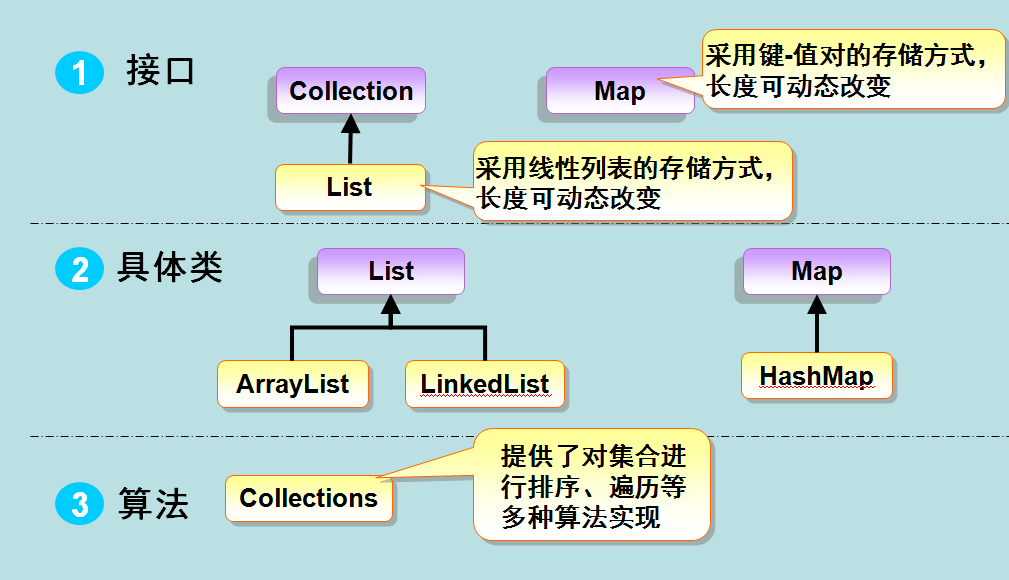该内容没有什么太难理解的地方,所以就只照书上的代码代码敲了一遍

ArrayList集合
package Collection;
import java.util.ArrayList;
import java.util.Iterator;
public class Collectiontest {
public static void main(String[] args) {
ArrayList<String> list = new ArrayList<String>();
list.add("wahaha");
list.add("kangshifu");
list.add("ADgai");
for(String str:list) {
System.out.println(str);
}
//使用迭代器遍历集合
Iterator<String> ite = list.iterator();
while(ite.hasNext()) { //判断是否有下一个元素
System.out.println(ite.next());
}
String[] s = new String[list.size()];
list.toArray(s);
for(int i=0;i<list.size();i++) {
System.out.println(s[i]);
}
}
}Set集合
package Collection;
import java.util.*;
public class UpdataStu implements Comparable<Object>{
String name;
long id;
public UpdataStu(String name,long id) {
this.id = id;
this.name = name;
}
public int compareTo(Object o){
UpdataStu upstu = (UpdataStu)o;
int result = id>upstu.id?1:(id==upstu.id ?0:-1);
return result;
}
public String getName() {
return name;
}
public void setName(String name) {
this.name = name;
}
public long getid() {
return id;
}
public void setid(long id) {
this.id = id;
}
public static void main(String[] args) {
UpdataStu stu1 = new UpdataStu("李同学",01011);
UpdataStu stu2 = new UpdataStu("陈同学",01021);
UpdataStu stu3 = new UpdataStu("王同学",01051);
UpdataStu stu4 = new UpdataStu("马同学",01012);
TreeSet<UpdataStu> tree = new TreeSet<UpdataStu>();
HashSet<String> hash = new HashSet<String>();
tree.add(stu1);
tree.add(stu2);
tree.add(stu3);
tree.add(stu4);
hash.add("first");
hash.add("second");
hash.add("first");
System.out.println(hash);//集合中不能有重复元素,所以输出只有两个元素
Iterator <UpdataStu> it = tree.iterator();
while(it.hasNext()) {
UpdataStu stu = (UpdataStu)it.next();//it.next()取出的是Object对象,所以这里需要强制转换
System.out.println(stu.getid()+" "+stu.getName());
}
System.out.println("------------");
it = tree.headSet(stu2).iterator();
while(it.hasNext()) {
UpdataStu stu = (UpdataStu)it.next();
System.out.println(stu.getid()+" "+stu.getName());
}
}
}Map集合
package Collection;
import java.util.Map;
import java.util.HashMap;
import java.util.Iterator;
public class Test {
public static void main(String[] args) {
Map<String,String> map = new HashMap<String,String>();
map.put("1", "lala");
map.put("2","haha");
map.put("3", "shadiao");
for(String key:map.keySet()) {
System.out.println(key+" "+map.get(key));
}
//使用迭代器遍历map
Iterator<Map.Entry<String,String>> it = map.entrySet().iterator();
while(it.hasNext()) {
Map.Entry<String,String>entry = it.next();
System.out.println("key= " + entry.getKey() + " and value= " + entry.getValue());
}
}
}